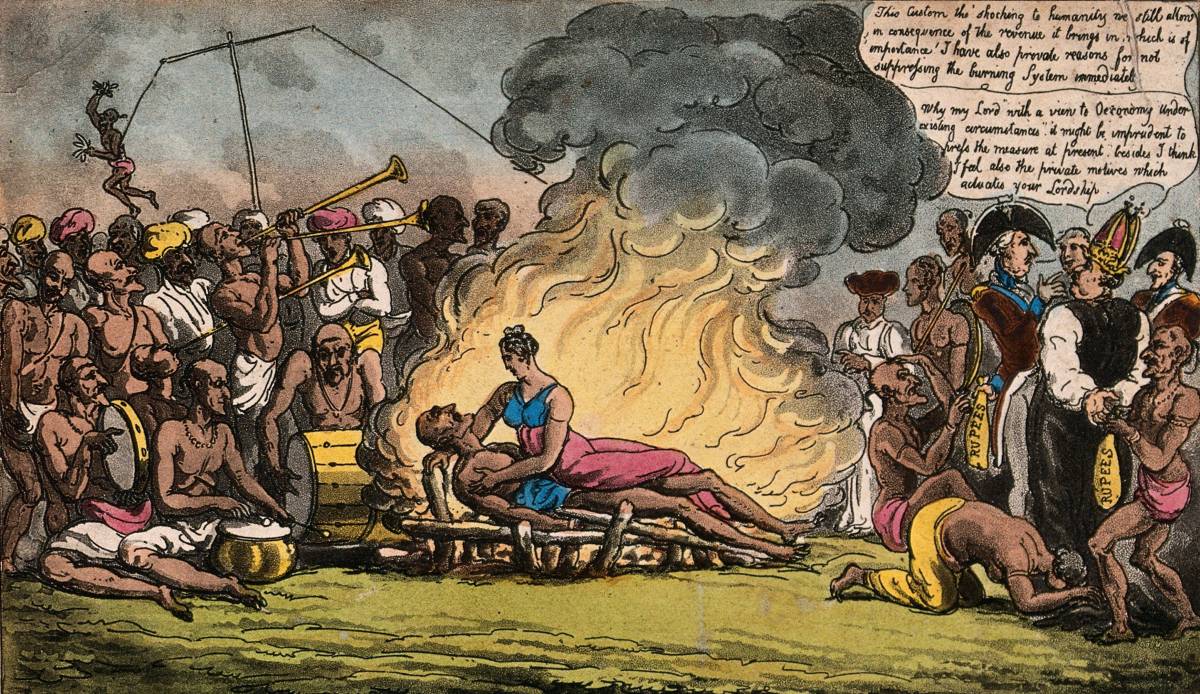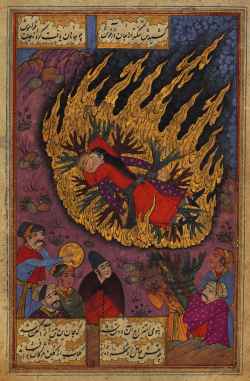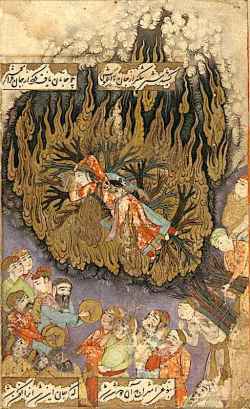Suttee, with Lord Hastings shown as accepting bribes to allow its continuation
Year: 1815
Location: London, Wellcome Collection
External link: wellcomecollection.org
Topics:
2. Sacrifice and religion: Comparisons, Antiquarians, Anthropology (16th-18th Century) 3. Sacrifice and politics (16th-18th Century)
2. Sacrifice and religion: Comparisons, Antiquarians, Anthropology (16th-18th Century) 3. Sacrifice and politics (16th-18th Century)
Edited by: Chiara Petrolini
Related Documents:
Scene of a Sati, with a woman throwing herself into the flames amid a crowd playing trumpets. Above, a winged devil holds the banner with the book's title and the torch with which he lights the ritual fire. (1670)
from: Abraham Rogerius, Le Théâtre de l’idolatrie ou la porte ouverte, Amsterdam, Jean Schipper, 1670, title page
Contentious Traditions: The Debate on Sati in Colonial India
Delhi: Kali for Women, 1989.
Satī, from a Sūz u Gudāz manuscript. The union of the couple on the pyre (1657)
from: Sūz u Gudāz ms, Iran, Walters Manuscript W. 649, fol. 19b (Burning and Melting)
The Walters Art Museum, Baltimore, Maryland
Manner in which the Women in India Burn (1728)
from: Picart, B. Ceremonies et Coutumes Religieuses des Peuples Idolatres, tome II, Amsterdam, 1728
London, Wellcome Collection
Satī. The bride immolates herself on the funeral pyre (1657)
from: Isfahan, Iran
The Israel Museum, Jerusalem





